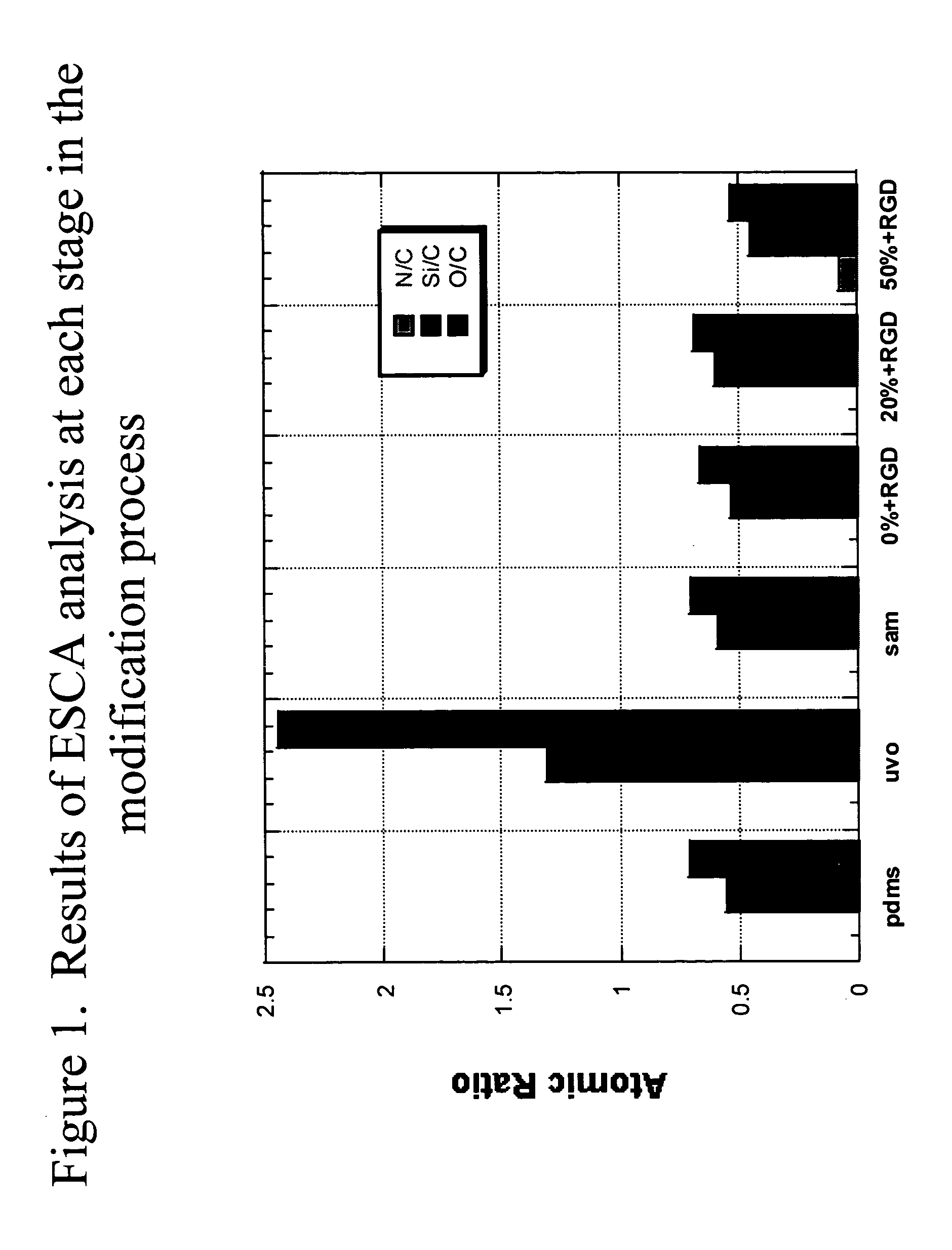Methods of surface modification of a flexible substrate to enhance cell adhesion
a flexible substrate and cell adhesion technology, applied in the field of surface modification of flexible substrates to enhance cell adhesion, can solve the problems of inability to support primary cells derived from human tissues for survival, proliferation, differentiation in vitro using conventional tissue culture techniques, and limited the application of cell culture in areas, therapies and drug screening, etc., to achieve enhanced cell adhesion and enhanced cell adhesion properties
- Summary
- Abstract
- Description
- Claims
- Application Information
AI Technical Summary
Benefits of technology
Problems solved by technology
Method used
Image
Examples
example 1
Preparation of a Silicone Surface by Applying Stress to the Polymer
[0053]PDMS networks were prepared by casting a mixture of PDMS (molecular weight=49.5 kDa) and a cross-linker into a film (thickness≈0.5 mm) and curing it at 55° C. for 1 hr under a vacuum. Following extraction in toluene (24 hrs), the samples were dried completely. Strips (1×5 cm) of the material were uniaxially stretched in a custom-designed apparatus and exposed to the UV / ozone treatment for 30 minutes, which produced PDMS-UVO surfaces with a large number of hydrophilic groups. The PDMS-UVO specimens were exposed to a vapor of undecenyl trichlorosilane (UTS), whose molecules formed a self-assembled monolayer (SAM) on the PDMS-UVO surfaces. After the UTS attachment, the strain was released from the substrate, which returned to its original size, causing the attached molecules to pack closely. The degree of packing of the UTS moieties was found to be proportional to the initial strain on the PDMS network. Carboxylic...
PUM
| Property | Measurement | Unit |
|---|---|---|
| concentration | aaaaa | aaaaa |
| concentration | aaaaa | aaaaa |
| concentrations | aaaaa | aaaaa |
Abstract
Description
Claims
Application Information
 Login to View More
Login to View More - R&D
- Intellectual Property
- Life Sciences
- Materials
- Tech Scout
- Unparalleled Data Quality
- Higher Quality Content
- 60% Fewer Hallucinations
Browse by: Latest US Patents, China's latest patents, Technical Efficacy Thesaurus, Application Domain, Technology Topic, Popular Technical Reports.
© 2025 PatSnap. All rights reserved.Legal|Privacy policy|Modern Slavery Act Transparency Statement|Sitemap|About US| Contact US: help@patsnap.com


